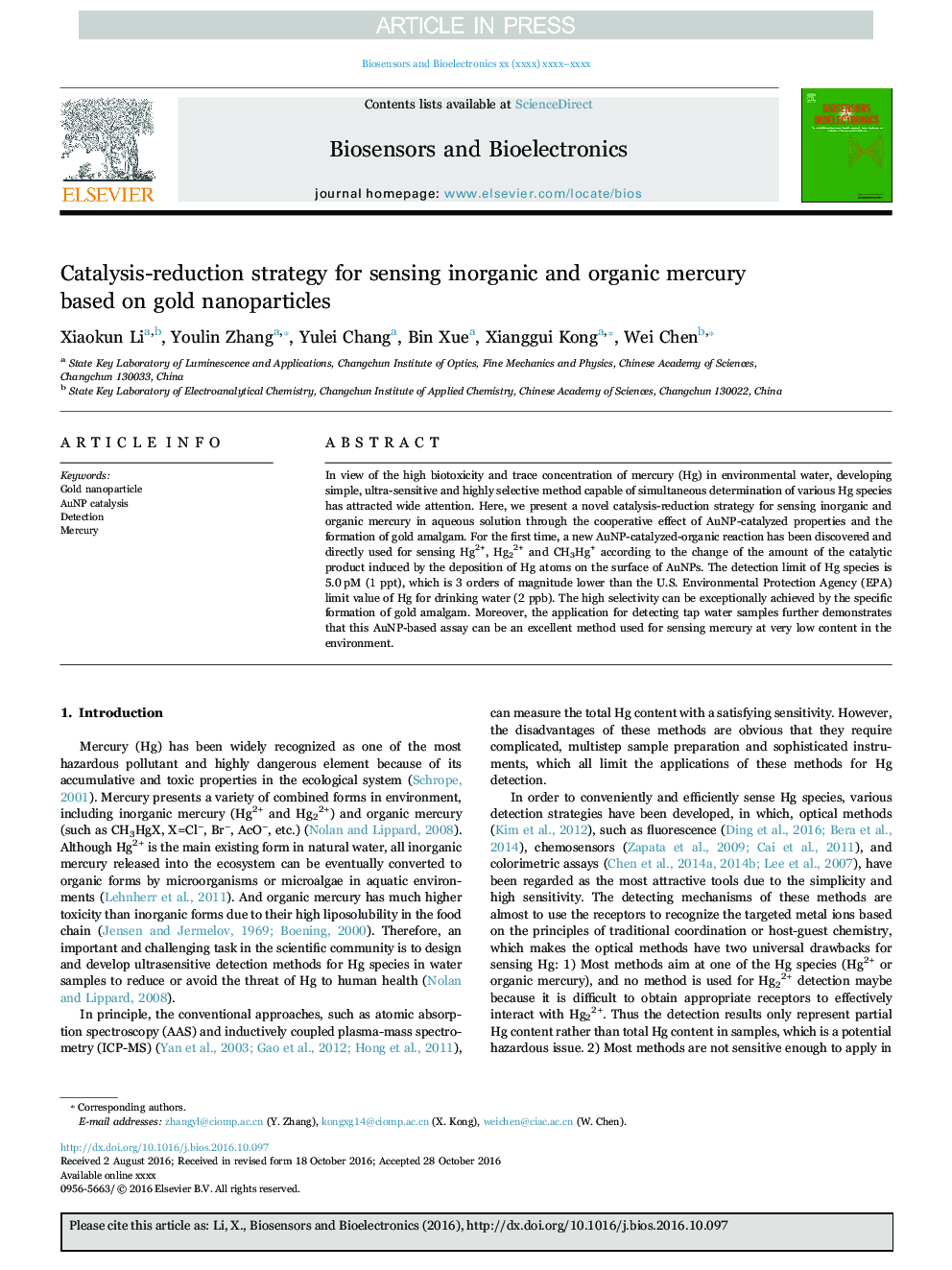| Article ID | Journal | Published Year | Pages | File Type |
|---|---|---|---|---|
| 5031610 | Biosensors and Bioelectronics | 2017 | 7 Pages |
Abstract
In view of the high biotoxicity and trace concentration of mercury (Hg) in environmental water, developing simple, ultra-sensitive and highly selective method capable of simultaneous determination of various Hg species has attracted wide attention. Here, we present a novel catalysis-reduction strategy for sensing inorganic and organic mercury in aqueous solution through the cooperative effect of AuNP-catalyzed properties and the formation of gold amalgam. For the first time, a new AuNP-catalyzed-organic reaction has been discovered and directly used for sensing Hg2+, Hg22+ and CH3Hg+ according to the change of the amount of the catalytic product induced by the deposition of Hg atoms on the surface of AuNPs. The detection limit of Hg species is 5.0Â pM (1 ppt), which is 3 orders of magnitude lower than the U.S. Environmental Protection Agency (EPA) limit value of Hg for drinking water (2 ppb). The high selectivity can be exceptionally achieved by the specific formation of gold amalgam. Moreover, the application for detecting tap water samples further demonstrates that this AuNP-based assay can be an excellent method used for sensing mercury at very low content in the environment.
Keywords
Related Topics
Physical Sciences and Engineering
Chemistry
Analytical Chemistry
Authors
Xiaokun Li, Youlin Zhang, Yulei Chang, Bin Xue, Xianggui Kong, Wei Chen,
